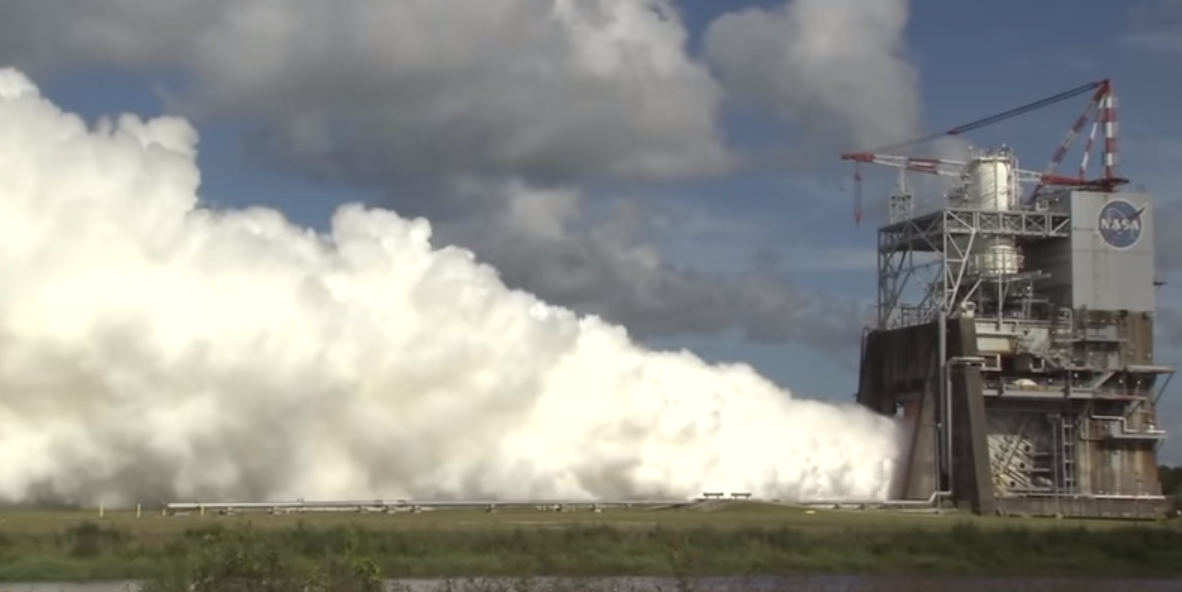Earlier this month NASA engineers successfully carried out a development test-firing of an RS-25 rocket engine equipped with a modernized “brain” controller at the Stennis Space Center in Mississippi. The test was part of the ongoing development effort coordinating the agency’s SLS Mars mega rocket, scheduled to blast-off in late 2018.
The full-thrust RS-25 engine hot fire test ran for its planned full duration of 7.5 minutes and met a host of critical test objectives required to confirm and scope out the capabilities and operating margins of the upgraded engines, which are recycled from the shuttle era.

Image source: NASA.
“We ran a full program duration of 420 seconds and we had no failure identifications pop up,” said Steve Wofford, manager of the SLS Liquid Engines Office at NASA’s Marshall Space Flight Center in Huntsville, Alabama. “It looks like we achieved all of our data objectives.”
A cluster of four RS-25 engines will power the Space Launch System (SLS) at the base of the first stage, which is also known as the core stage.
According to NASA, SLS is the most powerful booster in the world, and it will propel the agency’s astronauts in the Orion crew capsule on explorations into deep space. This includes missions to the moon, to asteroids, and to Mars.
The main goal of the development tests is to validate the capabilities of a new controller, or “brain” for the engine and to verify the different operating conditions needed for the SLS vehicle. The controller monitors engine status and communicates between the rocket and the engine, relaying commands to the engine and transmitting data back to the rocket. The test was part of a continuing series targeted at certifying the engines for flight.
See NASA’s video of the full RS-25 rocket engine test below.
The RS-25’s engines generate about 500,000 pounds of thrust, each fueled by cryogenic liquid hydrogen and liquid oxygen. Measuring 14 feet tall and 8 feet in diameter, they’ll be operating at 109% of power for SLS, which is a higher power level compared to a routine usage of 104.5% during the shuttle era. They’re also equipped to withstand extreme temperatures ranging from -423°F to more than 6,000°F.
NASA’s goal is to send humans to Mars by the 2030s. The maiden test flight of the SLS/Orion targeted for no later than November 2018 is one small step towards exploring deep space like never before.
Advertisement
Learn more about Electronic Products Magazine





